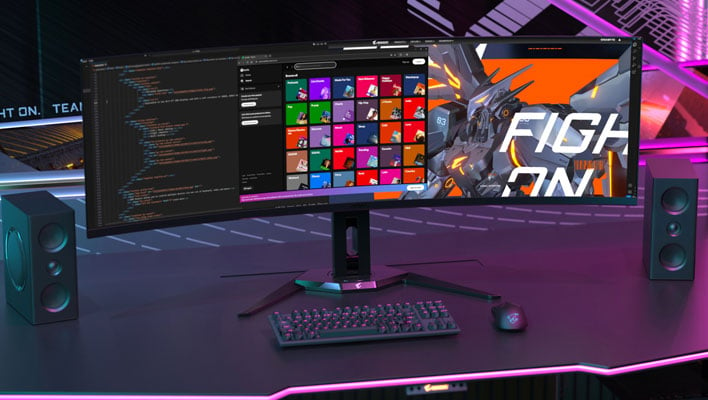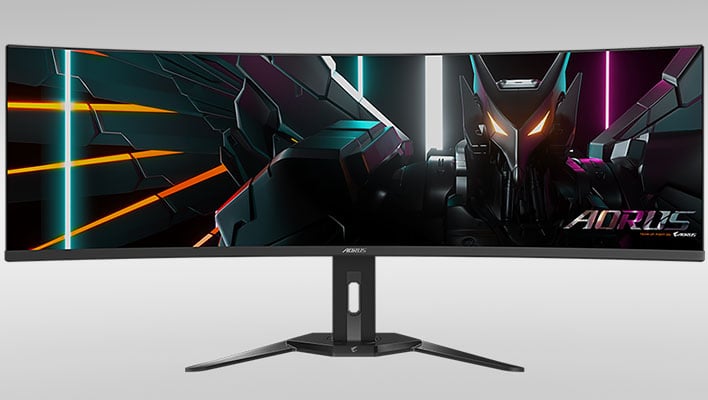Gigabyte's Aorus CO49DQ 49-Inch OLED Gaming Monitor Uses An AI Trick To Tackle Burn-In

We'd be shocked if the Consumer Electronics Show (CES) next month is not dominated by AI-infused announcements. As we wait to see what exactly is in store, Gigabyte has jumped the gun with its Aorus CO49DQ, a super ultra-wide gaming monitor with a curved QD-OLED panel and a special AI algorithm to mitigate the risk of burn-in.
How exactly does it work? That's a good question and unfortunately Gigabyte is coy on the details. Gigabyte simply states that "Aorus uses [an] AI-based algorithm to minimize the risks of burn-in issues and deploys it across a series of OLED protecting technologies on the Aorus AO49DQ."

Further clues can be found in the user manual under the OLED Care section, which details the following...
- Care+: Integrate OLED Care settings for optimal protection or select to customize your own.
- Usage Time: Shows the accumulated screen usage time.
- Pixel Clean: When the monitor is used for over 4 hours, it’s recommended to initiate this process to clean and refresh the pixel compensation OLED screen.
- Static Control: Reduces screen brightness when the image remains static.
- Pixel Shift: Moves the screen content by pixels to prevent static image retention.
- APL Stabilize: Adjusts the screen brightness to stabilize Average Picture Level (APL).
- Sub-Logo Dim: Reduce the brightness of the taskbar and static logos to prevent image retention.
Our best guess is that Gigabyte's AI algorithm automatically employs the above measures, several of which are pretty standard in the OLED space. It appears Gigabyte is playing a bit fast and loose with the term "AI" (there's no machine learning aspect that we're aware of), though it's far from alone in doing so.

AI tricks aside, the CO49DQ is an intriguing entry into the growing super ultra-wide space. It features a 5120x1440 resolution (32:9 aspect ratio), which is like having dual 27-inch QHD (16:9) monitors side-by-side, but without the distracting gap or bezels in the middle.
It's a 10-bit panel boasting 99% coverage of the DCI-P3 color space, and is fast as well with a 144Hz refresh rate and 0.03ms gray-to-gray (GtG) response time.
Gigabyte only divulges the typical brightness, which is 250 nits. However, this the CO49DQ is DisplayHDR True Black 400 certified, part of which requires a peak brightness of at least 400 nits.

Connectivity options include a pair of HDMI 2.1 ports, a single DisplayPort 1.4 input, USB Type-C (alternate mode, upstream port, power delivery up to 18W), two downstream USB 3.0 ports, a single USB 3.0 upstream port, and a 3.5mm earphone jacks.
It also features a pair of built-in 5W speakers and a KVM switch, the latter of which can be a boon in the super ultra-wide space—it allows you to control multiple devices using a single set of keyboard, video, and mouse. Picture-in-picture (PiP) and picture-by-picture (PbP are supported as well.
The big question mark surrounding Gigabyte's Aorus CO49DQ monitor is the cost, and we probably won't find out until CES.

